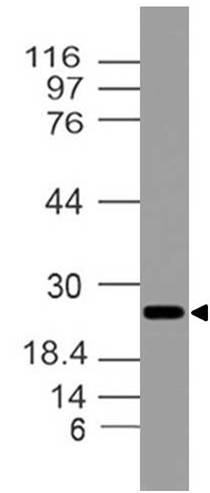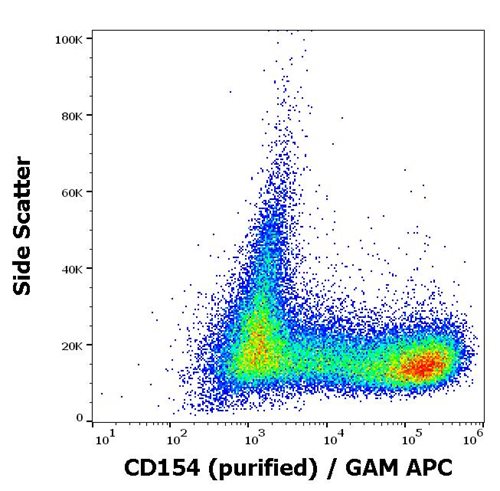Anti-CD262 / TRAIL-R2 Monoclonal Antibody (Clone:DR5-01-1)-PE Conjugated

Figure 1: Surface staining of CD262 on CD262-transfectants with the antibody to CD262 (DR5-01-1) PE.
Roll over image to zoom in
Shipping Info:
For estimated delivery dates, please contact us at [email protected]
| Amount : | 0.1 mg |
| Isotype : | Mouse IgG1 |
| Storage condition : | Store in the dark at 2-8°C. Do not freeze. Avoid prolonged exposure to light. |
TRAIL-R2 (CD262, DR5) is one of two TNF superfamily member intracellular death domain containing receptors for TRAIL (APO2L). Apoptosis, or programmed cell death, occurs during normal cellular differentiation and development of multicellular organisms. Apoptosis is induced by certain cytokines including tumor necrosis factor (TNF) and Fas ligand in the TNF family through their death domain containing receptors, TNF receptor 1 (TNFR1) and Fas, respectively. Another member in the TNF family has been identified and designated TRAIL (for TNF related apoptosis inducing ligand) and Apo2L (for Apo2 ligand). Receptors for TRAIL include two death domain containing receptors, DR4 and DR5, as well as two decoy receptors, DcR1 and DcR2, lacking the intracellular signaling death domain. DcR1 (also called TRID), like the related death receptors DR4 and DR5, contains two extracellular cysteine rich domains. However, DcR1 contains no intracellular death domain and is thus incapable of signaling apoptosis. It has been suggested DcR1 is responsible for TRAIL resistance in normal human tissues including heart, placenta, lung, liver, kidney, spleen, and bone marrow. DR5 is a member of the TNF receptor superfamily, and contains an intracellular death domain. This receptor can be activated by tumor necrosis factor related apoptosis inducing ligand (TNFSF10/TRAIL/APO2L), and transduces apoptosis signal. Studies with FADD deficient mice suggested that FADD, a death domain containing adaptor protein, is required for the apoptosis mediated by this protein.
| Subcellular location: | Membrane |
| Tissue Specificity: | Widely expressed in adult and fetal tissues; very highly expressed in tumor cell lines such as HeLaS3, K-562, HL-60, SW480, A-549 and G-361; highly expressed in heart, peripheral blood lymphocytes, liver, pancreas, spleen, thymus, prostate, ovary, uterus, placenta, testis, esophagus, stomach and throughout the intestinal tract; not detectable in brain. |
| BioGrid: | 114323. 65 interactions. |
|
There are currently no product reviews
|





















.png)











